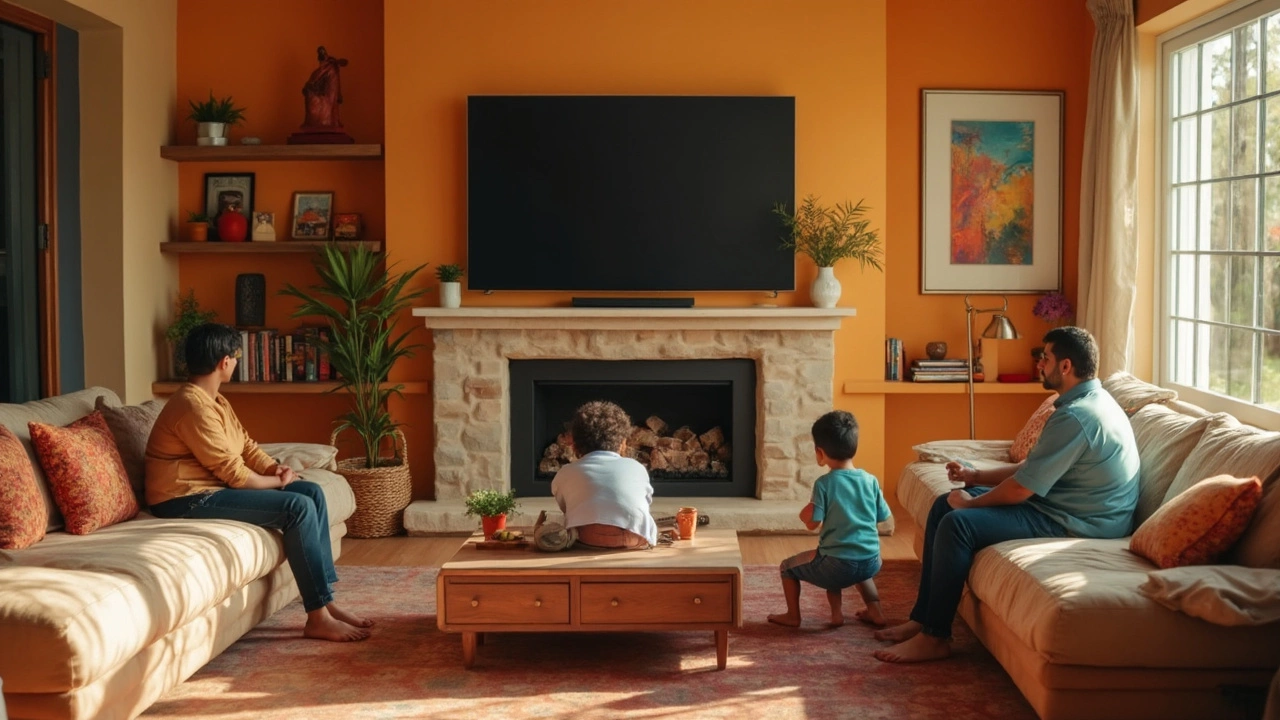TV Safety Tips: Keep Your Screen Secure and Your Home Safe
Got a new TV and want to make sure it stays safe for years? A few simple steps can stop shocks, falls, and other hazards before they happen. Below you’ll find the most useful advice for setting up a TV that won’t end up as a costly accident.
First off, think about where the TV lives. A flat surface that’s level and strong enough to hold the weight is a must. If you’re using a TV stand, check the weight rating and make sure the stand’s legs are firmly planted on the floor. A wobbling stand can tip over with just a light push, especially if kids or pets are around.
Choosing a Safe TV Stand
When you’re shopping for a stand, look for a wide base and sturdy construction. Metal frames or thick hardwood are best; cheap particle board can break under the load. Make sure the stand’s shelves can hold any extra gear like game consoles or soundbars without sagging. If you have a large screen (65" +), double‑check the manufacturer’s weight limit and match it to the stand’s capacity.
Anchoring the stand to the wall is another smart move. Most stands have pre‑drilled holes for this purpose. Use a stud finder and a couple of short wood screws to secure the frame. This tiny step can keep the whole unit from tipping over if a child leans on it.
Mounting and Wiring Tips
If you prefer a wall‑mounted TV, the right mount matters. Choose a mount labeled “VESA‑compatible” and rated for your TV’s size and weight. A tilting mount can help reduce glare, but a fixed mount offers the most stability. Use a stud‑mounted bracket or a solid wall anchor for drywall; never rely on just the drywall alone.
Run power cords and HDMI cables neatly behind the TV. Loose cords are trip hazards and can pull the TV forward. Cable ties or a simple cord cover keep everything tidy and safe. If you’re running a cord through a wall, hire a professional to avoid hidden fire risks.
Don’t forget about heat. TVs generate warmth, especially in bright rooms. Keep the back of the TV clear of books, blankets, or decorative items that could block airflow. A few inches of open space lets the built‑in fan do its job and prevents overheating.
Kids love to reach for bright screens. To make sure they stay safe, consider a low‑profile anchor strap that secures the TV to the wall. Some parents also use a protective screen filter to reduce glare and limit eye strain during long viewing sessions.
Finally, perform a quick safety check every few months. Tighten screws, verify that the mount is still level, and make sure cords haven’t frayed. A short routine can catch problems before they become expensive repairs.
By following these easy steps—choosing a solid stand, anchoring everything properly, and keeping cords tidy—you’ll enjoy a safe, reliable viewing experience for years to come.
Where Not to Put TV: Bad Spots and Why They Matter
Wondering where not to put your TV? This article breaks down the most common TV placement mistakes people make. Find out why certain spots ruin your viewing experience, risk your TV's safety, or clash with your living space. Learn which areas to avoid before drilling holes or buying a stand. Save yourself frustration and enjoy a better TV setup at home.





